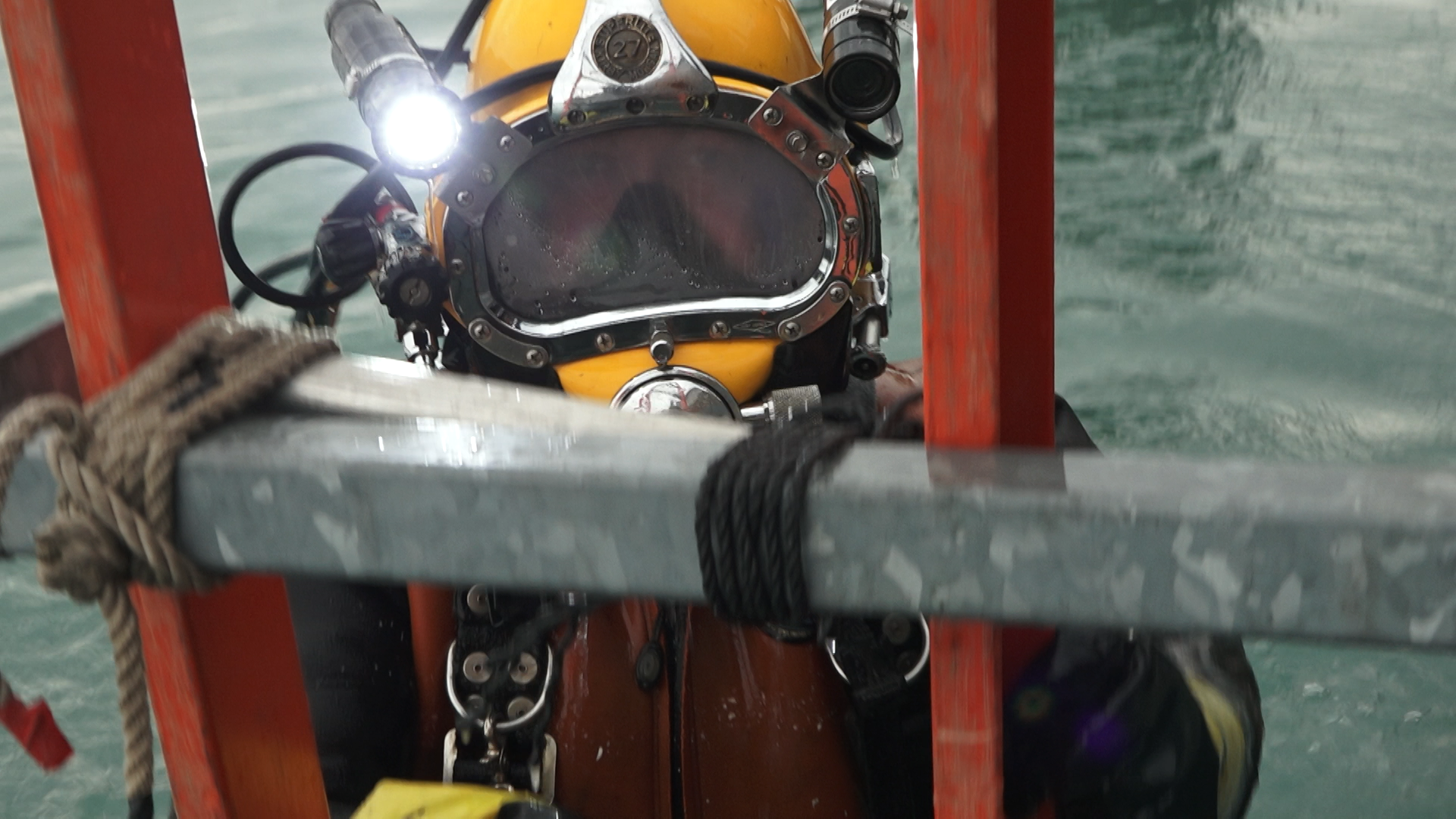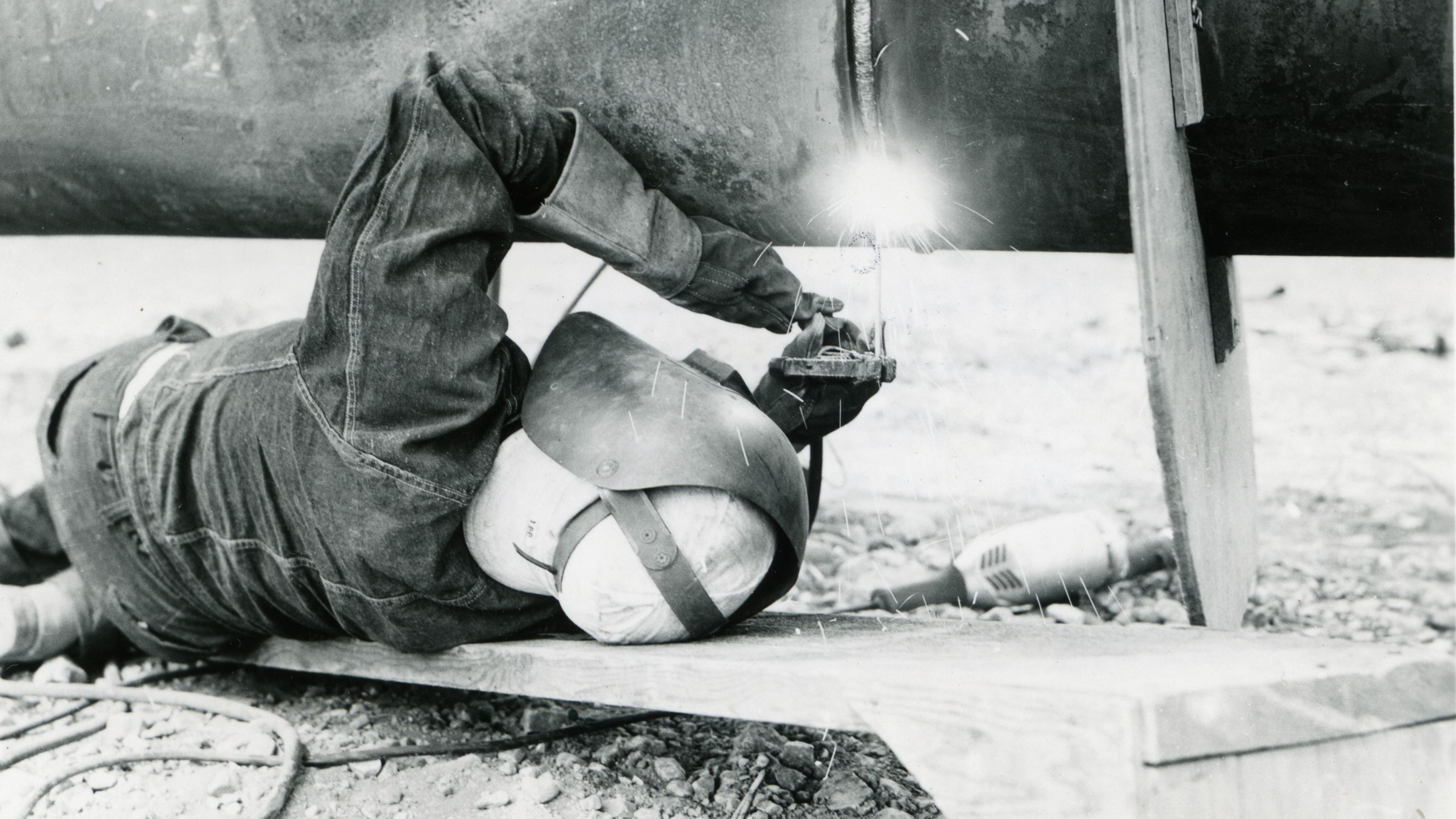Winter doesn’t stop work around the Great Lakes. See what happens at the Soo Locks when they close for maintenance, and drop into the chilly water with commercial divers who battle the zebra and quagga mussel invasions in the lakes. In a warmer setting, join us in the Mackinac Island school gym for a tournament just for island school teams.
WHERE WE TAKE YOU IN FEBRUARY
Watch Live on DPTV
Tuesday, February 25 at 7:30 PM
STATIONS CARRYING THE SERIES
WGVK-TV
Kalamazoo, Michigan
WNMU-TV
Marquette, Michigan
WMVS-TV
Milwaukee, Wisconsin
WCMU-TV
Mount Pleasant Michigan
WNIT-TV
South Bend, Indiana
WCNY-TV
Syracuse, New York
WGTE-TV
Toledo, Ohio
WDCQ-TV
University Center, Michigan
WNPI-TV
Watertown, New York for Ontario signal
WPBS-TV
Watertown, New York for U.S. signal
Have a question about the Great Lakes or life in the region?
Ask Great Lakes Now, and if we can answer it, we might loop it into our coverage so others can learn too.
Submit Your QuestionIsland Basketball
SEGMENT 1 | Mackinac Island, Michigan
Traveling by bus, ferry, airplane, snowmobile and horse taxi, basketball teams from four Great Lakes island schools met on Mackinac Island for their second annual tournament.
The girls and boys teams from Beaver, Mackinac, South Bass and Washington islands — representing three lakes and three states — spent two days playing hard-fought games.
“It’s really awesome because we’re playing against other teams who are just like us,” says Max Johnson, a guard on the Washington Island boys team, which usually plays bigger schools with deeper benches. “Here I feel like we’re at more of an equal level. We have an even amount of team members.“
They had spectators and cheering sections. Beaver Island school board president Susan Myers attended and cheered especially loudly for her granddaughter.
“Sports on Beaver Island is a very big deal. Sports is more than sports,” she says. “Our
kids can’t go to another school and meet people or that kind of thing. … It’s good for them because they also get to meet other kids their age.”
Watch the Great Lakes Now segment to learn more about life on the islands — and to see which teams won the tournament.
Here is other Great Lakes Now work about life on islands in the region:
Mussel Blasting
SEGMENT 2 | Port Huron, Michigan
When invasive zebra mussels arrived in the Great Lakes in the late 1980s, native mussels were not the only casualty. The mussels began clogging up pipelines and water pumps, overtaking seawalls — any hard surface seemed to be a suitable nesting point.
For power plants, zebra mussels meant clogged water intakes, choking off the water supply needed to cool plant equipment.
The Detroit-based energy company, DTE, needed to find a way to combat the mussels.
“They were attaching to everything, not just power plant intakes, but drinking water intakes. It became a huge issue for any industry that uses water,” says DTE biologist Matt Shackelford.
Commercial divers were sent in to take on the mussels. They developed an efficient method to help the plants remove the invasive mussels, called zebra blasting.
Meet Keith and his team of divers as we take a step into their underwater office.
Learn more about zebra mussels and the threat they pose in the Great Lakes:
- Read about zebra mussels spreading to Lake Superior HERE.
- Zebra mussels could be keeping mercury levels in fish high. Read more HERE.
- Check out some creative uses people have come up with for zebra mussel shells HERE.
- What are all the ways zebra mussels are impacting the Great Lakes? Click HERE to read the list.
Locking Up
SEGMENT 3 | Sault Ste. Marie, Michigan
The coal and iron ore shipped from Lake Superior ports fuels the U.S. steelmaking and manufacturing industries, but not before the freight goes through the Soo Locks in Sault Ste. Marie, Michigan. The locks allow 1,000-foot freighters to bypass the rapids of the St. Marys River and move between Lake Superior and the rest of the Great Lakes and beyond.
”About a hundred percent of the iron ore mined in the United States flows to this facility,” says Kevin Sprague, the Soo Locks’ Area Engineer. “That’s really critical for the integrated steel mills on the Great Lakes. The blast furnaces and those feed, those create the advanced high strength steel for the auto industry so that the auto bodies, that kind of thing.”
There are four locks at “the Soo,” but nearly 90 percent of the cargo moves through one of them: the Poe Lock. It’s the only one that can handle a fully loaded modern freighter.
But the Poe, which was built in 1896, is showing its age.
“If the Poe is out of service for six months—and this is a Department of Homeland Security statistic — 11 million Americans will become unemployed. Three to 5 million Canadians and Mexicans will be unemployed, and the layoffs will start within a matter of weeks,”
says Jim Weakley, president of the Lake Carriers’ Association, which represents operators of U.S. flag vessels on the Great Lakes.
Construction of a new Poe-sized lock is planned for the next seven to 10 years, but until it’s completed, workers labor through the winter to keep the Poe in working order.
Check out the rest of Great Lakes Now’s coverage of the Soo Locks:
Line 5 Archive
SEGMENT 4 | Straits of Mackinac
If you want to see photographs, architectural plans and other documents about the original construction of Enbridge Line 5, they’re now online thanks to the Detroit Historical Society.
An archival collection from the construction companies involved is now available to the public and researchers. Read HERE for more information about how to access it.
“We expect to have great interest in this collection given the interest and ongoing news coverage about the pipeline,” says Joel Stone, senior curator at the Detroit Historical Society.
Here’s more from Great Lakes Now about Line 5 and its controversies:
Michigan seeks extensive records about Line 5 from Enbridge
Energy Alternatives: Outside of Line 5, where can Michiganders get energy?
Line 5 Agreement Upheld: Michigan court says Enbridge tunnel project is constitutional
Previous Episodes
Waters Infected
Episode 1007
Household waste, lead and agricultural runoff are byproducts of modern life. Get the down-and-dirty reality of what can happen when these substances get into the region’s water systems.
Watch the ShowIn the Waters
Episode 1008
Politics, economics, recreation and science are all part of the latest episode of Great Lakes Now. Go underwater in the five lakes with a group of women who dove them all in 24 hours, and learn more about the controversy about controlling water levels in Lake Ontario and the St. Lawrence. Get aboard a commercial fishing boat on Lake Huron, and meet Dr. Katfish, who wants you to know that Great Lakes fish can be fun and festive.
Watch the ShowFinding Impacts
Episode 1009
Search for a meteorite on the bottom of Lake Michigan. Learn how a little striped fish might help us understand the health impacts of industrial chemicals on people, and see how a Milwaukee community is UN-developing a river to improve the environment and water quality.
Watch the ShowSand, Sinkholes and Science
Episode 1010
Travel with Great Lakes Now to the remote Canadian research station where scientists are working to understand – and protect – freshwater. Go deep into Lake Huron to see mysterious sinkholes, and watch as some homeowners try to save their Lake Michigan coastal homes while the waters wash away the beaches below them.
Watch the ShowFeatured Articles
Digital Credits
The Great Lakes Now Series is produced by Rob Green and Sandra Svoboda.
Digital Designer: Shelby Jouppi
Additional Video Provided by: Mlive Media Group, Fishtown Preservation Society, National Weather Service, Oceana County Road Commission, WTTW/Chicago Tonight, WRVO Public Media, Robert Carlisle

















